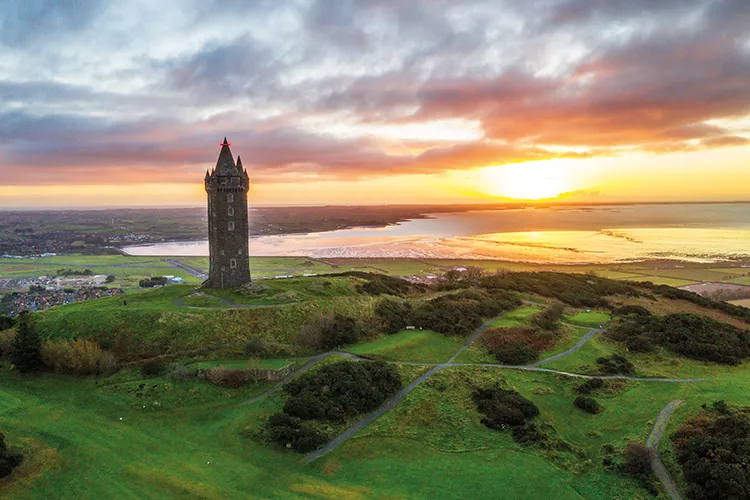
Rory Walsh crosses the Irish Sea to visit unique landforms shaped by water
View • Rural • Northern Ireland • Web Guide
Although the Discovering Britain website was created to explore the geography of England, Scotland and Wales, some featured places are further afield. Strangford Loch in Downpatrick, Northern Ireland, is the largest sea lake in the British Isles. Spanning 150 square kilometres, its diverse intertidal landscapes include sandy beaches, rocky coves, saltmarsh and mudflats. Some 2,000 marine species have been recorded, from tiny invertebrates to seals and porpoises. In winter, the bird population tops 70,000.
People, too, have lived by the lough for millennia. Evidence of Mesolithic settlers has been dated to 7,000 BCE, while the remains of a Neolithic log boat are circa 5,000 years old. Around 432 CE, St Patrick brought Christianity to Ireland by sailing into Strangford Lough. The inlet’s current name recalls later Viking visitors. Strangford originates from strangfyorthe, Norse for ‘strong fjord’. By the 18th century, lakeside towns thrived from fishing, boat building and harvesting seaweed.
One of the best places to survey Strangford Lough is Scrabo Tower. Overlooking the water on Scrabo Hill, its coned turrets could illustrate a fairy tale or gothic novel. The tower was built in 1857 as a memorial to Charles Stewart, Third Marquis of Londonderry. A spiral staircase inside climbs to 165 metres above sea level. The Mourne mountains, Isle of Man and Scottish island Ailsa Craig are visible on clear days. Scrabo Hill meanwhile provides unique views of one of Strangford Lough’s defining features.
Enjoying this article? Check out other Discovering Britain’s…
Scattered in the lough are about 70 islands. While some, known as pladdies, are permanently submerged, others breach the waves. Drumlins are small, elongated hills. Their shape and tendency to appear in clusters mean they’re sometimes likened to baskets of eggs. Geologists have different theories on exactly how drumlins formed. The widely accepted view is that these ‘eggs’ were hatched by rapidly melting ice.
Drumlins are made of glacial till, a mix of rocks and sediments transported by retreating ice sheets. During the last glacial period, around 12,000 years ago, much of Ireland was enveloped by thick ice. When the ice thawed, glaciers carried till, sometimes for hundreds of kilometres. At Strangford Lough glaciers met the sea. Its thought that this sped up the melting process, leading inundated glaciers to dump mounds of material. Erosion and tides have shaped the drumlins ever since. Today they provide homes for varied wildlife, including seabirds. Despite uncertainty about precisely how they appeared, we know that in this case it was the ‘eggs’ that came first.
Go to the Discovering Britain website to find more hikes, short walks, or viewing points. Every landscape has a story to tell!



